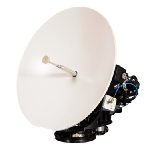The awards are in the form of Space Act Agreements with the companies matching or exceeding the awards with their own funds.

NASA has selected six American satellite communications (SATCOM) firms to begin developing and demonstrating near-Earth space communication capabilities that can support future agency missions.
As it moves to decommission its near-Earth satellite fleet, NASA has been investigating the viability of using commercial SATCOM networks for near-Earth operations for more than a year. This strategy will enable NASA to devote more time and resources to deep space exploration and science missions.
The total value of the Communications Services Project (CSP) sponsored agreements for the agency is $278.5m. During the five-year research and demonstration period, NASA expects each company to match or exceed agency contributions, totalling more than $1.5bn in cost-share investment.
Each company has proposed a technical approach to lower costs, increase flexibility, and improve performance for a broad range of missions. The agreements create opportunities to develop innovative solutions that could potentially meet NASAs future mission requirements while supporting each companys business model, future customers, and a growing domestic commercial SATCOM market.
Inmarsat Government Inc. of Reston, Virginia, has been awarded $28.6m. Inmarsats proposed approach demonstrates a commercial radio frequency geostationary orbiting L-band relay network for low-rate SATCOM services to spacecraft and launch vehicles for routine missions, contingency operations, launch and ascent, and early operations phase communications.
Kuiper Government Solutions (KGS) LLC of Arlington, Virginia, has been awarded $67m. Kuipers proposed approach demonstrates a commercial optical low-Earth orbiting relay network for high- and- low-rate SATCOM services to spacecraft in low-Earth orbit for routine missions, contingency operations, and early operations phase communications.
SES Government Solutions of Reston, Virginia, has been awarded $28.96m. SESs proposed approach demonstrates commercial radio frequency geostationary orbiting C-band and medium-Earth orbiting Ka-band relay networks for high- and- low-rate SATCOM services to spacecraft in low-Earth orbit for routine missions, contingency operations, launch and ascent, and early operations phase communications.
Space Exploration Technologies (SpaceX) of Hawthorne, California, has been awarded $69.95m. SpaceXs proposed approach demonstrates a commercial optical low-Earth orbiting relay network for high-rate SATCOM services to spacecraft in low-Earth orbit for routine missions, contingency operations, launch and ascent, and early operations phase communications.
Telesat US Services LLC of Arlington, Virginia, has been awarded $30.65m. Telesats proposed approach demonstrates commercial radio frequency geostationary orbiting C-band and low-Earth orbiting Ka-band relay networks for high- and- low-rate communications services to spacecraft in low-Earth orbit for routine missions.
Viasat Incorporated of Carlsbad, California, has been awarded $53.3m. Viasats proposed approach demonstrates a commercial radio frequency geostationary orbiting Ka-band relay network for high- and low-rate communications services to spacecraft in low-Earth orbit for routine launch and missions.
Each company will complete technology development and in-space demonstrations by 2025 to prove their proposed solution will deliver robust, reliable, and cost-effective mission-oriented operations, including the ability for new high-rate and high-capacity two-way communications. NASA intends to seek multiple long-term contracts to acquire services for near-Earth operations by 2030, while phasing out NASA owned and operated systems.
The CSP is managed by NASA Glenn in Cleveland under the direction of the Space Communications and Navigation Program, located at NASA Headquarters in Washington.















































































